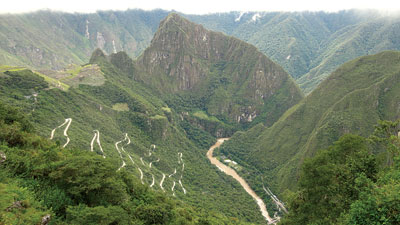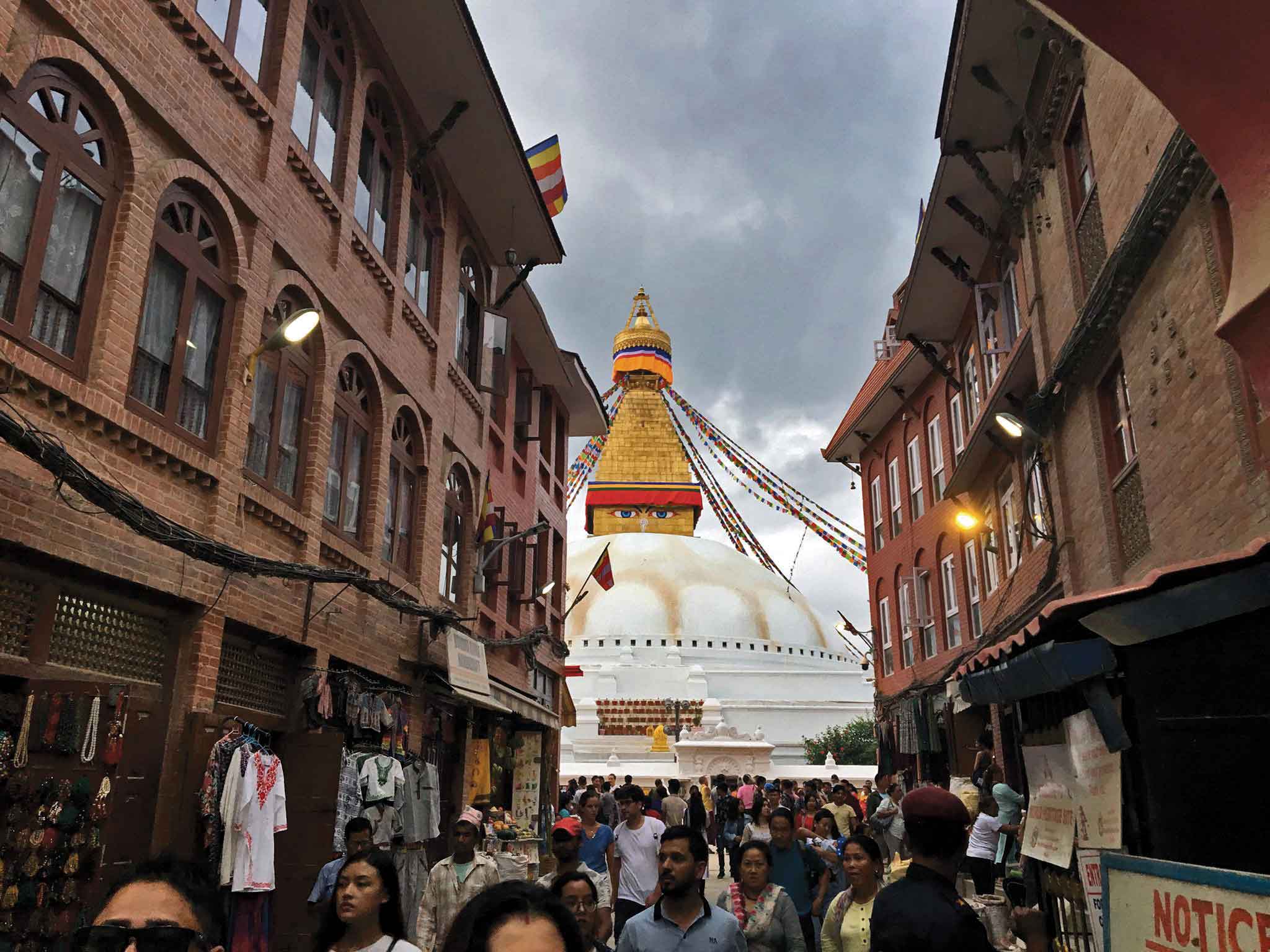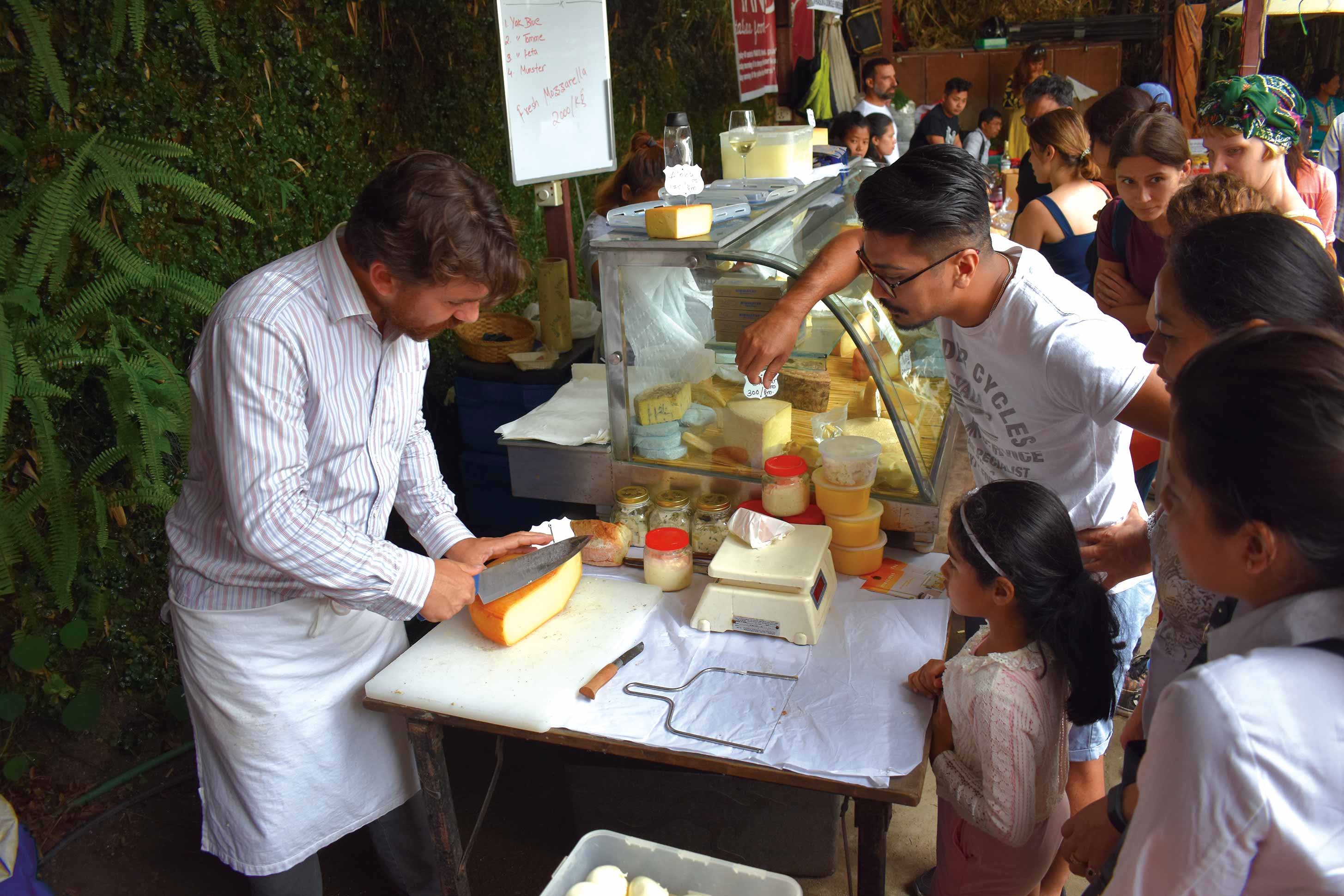Comparing the Andes and the Nepali Himalaya brings up intriguing commanalities between the two mountainous regions.
Having lived in the Himalayas for over ten years, in the ‘winter’ of 2011-2012, I set off to spend some time in the Andes. Naturally, I sought a comparison of these two highest mountain ranges on Earth.
An immediate example of their polarity arose for me as I left behind a chilly December winter of the Himalayas and arrived 180 degrees around the planet in the warm Andean wet season weather. Whereas the Himalayas have all four seasons, the Andes simply have one wet and one dry, during which time the land is either lush and fertile or barren and brown.
 As I drove for the first time down the Sacred Valley in southern Peru on my way to Machu Picchu, I could have been back in any mid-altitude green valley of the Himalayas. Fields of different shades of agriculture stretched from one side to the other as its central river, the Urubamba snaked along the middle, the sides of the Andean valley steeply climbing to snow peaked tops.
As I drove for the first time down the Sacred Valley in southern Peru on my way to Machu Picchu, I could have been back in any mid-altitude green valley of the Himalayas. Fields of different shades of agriculture stretched from one side to the other as its central river, the Urubamba snaked along the middle, the sides of the Andean valley steeply climbing to snow peaked tops.
Geographically, and topographically, as you cross the passes of the Andes, you will wind down through cloud-filled, twisting valleys lined with waterfalls pouring their fresh supplies into the rivers below. The landscape gently merges into deeper and taller jungle until you reach the plains which are barely a few hundred metres above sea level and you are in Amazonia proper. In comparison, when passing over any border into China’s Tibetan autonomous region from Nepal, you’ll arrive on the barren Tibetan plateau that goes on for miles and miles with very few trees and scrubs of bushes at an average height of over 3000m. The only similarity here is that in both places, the passes reach around 4000-5000m above sea level and one tends to get the dull headache and nausea of altitude sickness. In Peru, they’ll take a handful of coca leaves to chew as a remedy, whereas in Tibet you’ll get a salty butter tea.
 Both the Andes and Himalayas cradle lovely hot springs. Not the hottest one around, Tatopani in the Kali Gandaki gorge of Nepal is nevertheless located in a delightful setting, whereas you can cook your rice and dal in the boiling temperatures of the Kullu-Manali hot springs of Northern India. Similarly, a well organized hot spring facility offering various pools at different temperatures is nestled in a gorge at a place called Lares off the main road of the Sacred valley route in Peru.
Both the Andes and Himalayas cradle lovely hot springs. Not the hottest one around, Tatopani in the Kali Gandaki gorge of Nepal is nevertheless located in a delightful setting, whereas you can cook your rice and dal in the boiling temperatures of the Kullu-Manali hot springs of Northern India. Similarly, a well organized hot spring facility offering various pools at different temperatures is nestled in a gorge at a place called Lares off the main road of the Sacred valley route in Peru.
Yet how have humans adapted to living in these high altitude places on opposite sides of the world? This is where some startling similarities emerge, even though the historical and cultural inputs that have intervened to contribute to these display many differences.
In both the Himalayas and the Andes, people live a subsistent lifestyle. Having historically been overpowered by people coming from outside, locals are generally suspicious of foreigners. A kind of victim mentality lingers. Although many are land rich, they suffer from monetary poverty and the youth wish for less physically hard lives outside of the standard village setting, where one rises at dawn and works manually until nightfall just to scrape a living. It speaks of a feudal past, ways that have existed for centuries in these places. No matter who conquers the place or which religion dominates, they are still dependent on the land and the elements in order to survive.
Yet survival is the key element in life for all humans. Transportation of food is difficult in any high mountainous region, where small towns and villages may not always be accessible by road. Pack animals are mostly used - llamas in Peru, mules in the Himalayas. People will generally eat whatever can be grown nearby and their main occupation tends to be farming on terraces that have been laboriously built on the sides of steep mountains where machines cannot be driven and the work must be entirely done by hand. People in both the Andes and the Himalayas also rear animals like sheep and cows for wool and milk.
 In the Himalayas, rice, maize, tea and orchards of fruits like apples, peaches, pears and plums are common. In Peru, the major food crops are maize that is made into porridge, quinoa (a high vitamin cereal) and above all, potatoes. In the Andes, these are like rice to the Himalayas i.e., they are eaten at every meal. Similarly in both regions, vegetables are plentiful in the lower regions, but those living at higher altitudes have to make do with whatever may be found on the mountainside. If you know what to look for, you’ll find a plethora of herbs and greens growing there that will suffice. I have experienced a similar style of cuisine in the Muktinath valley of Nepal (3000-4000m) whereby mushrooms, green leaves and roots end up in the evening soup.
In the Himalayas, rice, maize, tea and orchards of fruits like apples, peaches, pears and plums are common. In Peru, the major food crops are maize that is made into porridge, quinoa (a high vitamin cereal) and above all, potatoes. In the Andes, these are like rice to the Himalayas i.e., they are eaten at every meal. Similarly in both regions, vegetables are plentiful in the lower regions, but those living at higher altitudes have to make do with whatever may be found on the mountainside. If you know what to look for, you’ll find a plethora of herbs and greens growing there that will suffice. I have experienced a similar style of cuisine in the Muktinath valley of Nepal (3000-4000m) whereby mushrooms, green leaves and roots end up in the evening soup.
Tribes were able to develop their own distinct cultures and traditions in mountainous regions as people traditionally lived in valleys isolated from the rest of the world with entry and exit points lying over high mountain passes. Although colours are predominantly bright, the style of dress is markedly different between the Himalayas and Andes. Across the Himalayas, there are a variety of native costumes, ranging from local dress to the Tibetan chuba, the Indian sari as well as ‘Punjabi’ dress, whereas traditionally women in the Andes wear bowler hats and framed skirts as well as brightly coloured native dresses topped off with distinctive hats. These days many wear modern Western clothes in both places.
Houses in the Himalayas are traditionally made of wood and usually have sloping roofs to prevent the collection of rainwater and snow. However, nowadays they are often built with cement, bricks and stones. This is true of new buildings in the settlements of the Andean region too. However, in the countryside of Peru, homes are constructed with a type of brick called ‘adobe’ made from the soil itself. It is tempting to use the short-term benefits of the fast growing Eucalyptus tree as building material, but in the long term they suck so much water out of the ground that they leave large areas of land destitute of greenery. Reforestation is taking place and I saw patchworks of tiny deciduous trees planted in huge squares here and there as start-ups. Not long ago, electricity was considered a luxury that only people in the city enjoyed, but in recent years the governments of both of these mountainous lands have made an effort to bring it to all as well as develop road systems to aid easier travel and transportation.
Peruvians are traditionally descended from the native Incan people, however as Peru was colonized by Spain in the 1500’s, many also have ancestors from Europe. Due to intermarriage, a tribe called ‘mestizos’ (mixed people) came about. Missionaries converted many to Catholicism and Christian churches were built on top of local temples and shrines. However, even though Christianity is predominant everywhere, pre-Colombian religions do seem to have filtered into the rites and rituals of the church across the years. The British did not do such a full-scale job in India, converting only a portion of the population to Christianity in total. In a similar way, Hinduism and Buddhism crept into the Himalayan mountains and overshadowed the pagan shamanistic religions that have existed since time immemorial there. Even now, you’ll see pagan rituals taking place in the guise of established religions all over the Himalayas.
It is also recorded that around 12,000 years ago, the indigenous people of the Andes came from Mongolia, Tibet and the Himalayas, having crossed over the Baring straits between Russia and Alaska when there was still an ice passage there. Indeed the features of all North and South American natives are remarkably similar to people you’ll find in the very high and remote parts of the Himalayas. Perhaps there are more similarities than we can even begin to fathom as the genetic make-ups of these people continue in both places!











